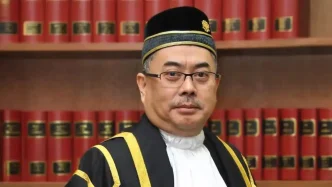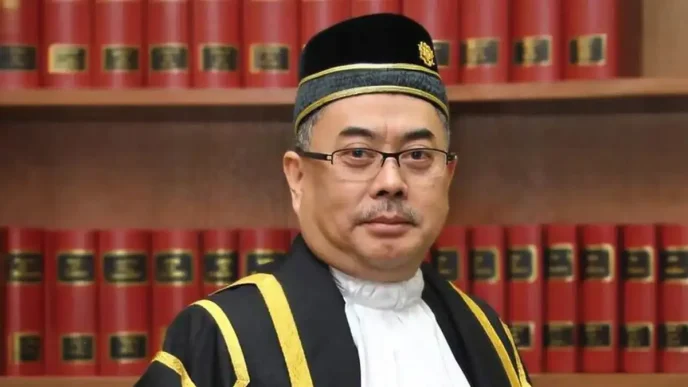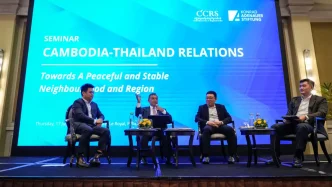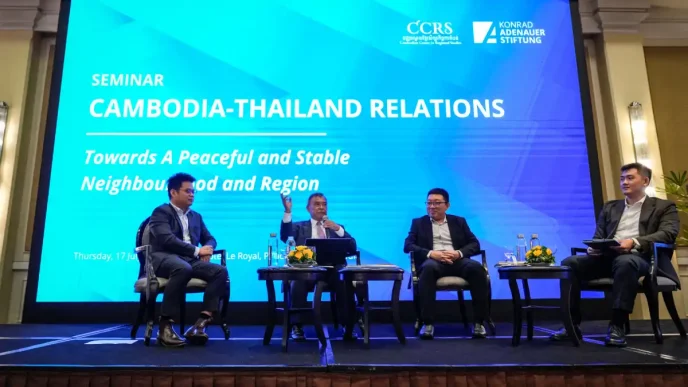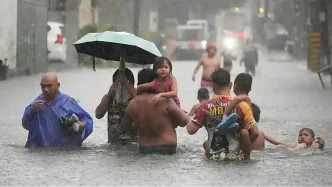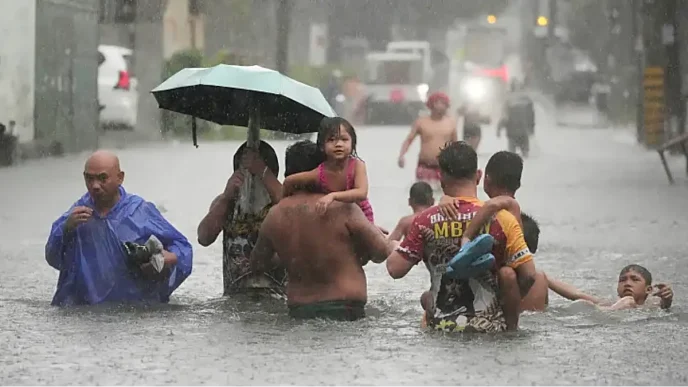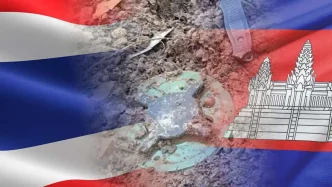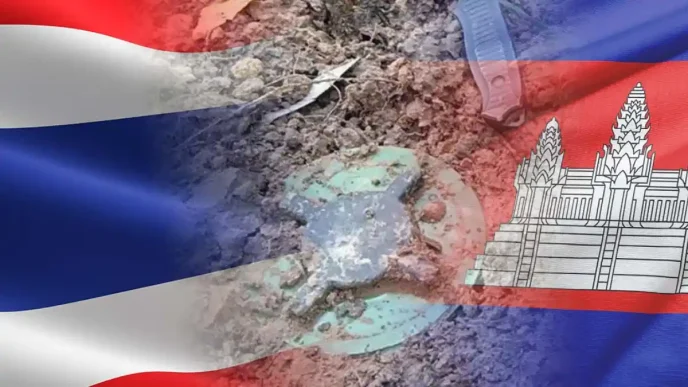In a dramatic turn of events, the collapse of an under-construction office building for Thailand’s State Audit Office (SAO) in Bangkok has ignited a firestorm of public suspicion and scrutiny over transparency in government projects. The incident, which occurred on March 28, 2025, during an 8.2-magnitude earthquake originating in Myanmar, has raised questions about the integrity of a project overseen by an agency tasked with upholding accountability in public institutions. With the SAO now under the spotlight, a House committee hearing has revealed troubling delays, contractor discrepancies, and design concerns, casting a shadow over the agency’s credibility.
Earthquake Exposes Structural and Procedural Flaws
The SAO’s unfinished high-rise in Bangkok’s Chatuchak district was the only structure reported to have collapsed during the powerful earthquake that struck Myanmar on March 28, 2025. The disaster, felt across parts of Thailand, left the agency’s ambitious office project in ruins, prompting immediate public outcry. How could a building designed to be earthquake-resistant fail so catastrophically, especially one belonging to an organization meant to exemplify transparency and oversight?
During a hearing on April 11, 2025, before the House Committee on Affairs of Courts, Public Prosecutors, State Enterprises, Public Organisations and Funds, SAO representatives faced intense questioning. The committee, chaired by United Thai Nation Party MP Sanya Nilsuphan, sought a detailed explanation for the collapse. Sanya emphasized the irony of the situation, noting that “the incident had raised public suspicion about transparency in the construction project—particularly given that the SAO is tasked with upholding transparency in government agencies.”
Deputy Governors Sutthipong Boonnit and Pimda Wapakphet, representing the SAO, testified that the building had been designed to withstand seismic activity. They stressed that the project was proposed and approved in full compliance with legal procedures. Sutthipong, addressing public criticism, clarified a widespread misconception about the scale of the project. While many believed the SAO employed only 500 staff, he revealed the actual figure was closer to 4,000, justifying the need for a larger, high-rise structure.
Contractor Delays and Hidden Partnerships
Delving deeper into the project’s history, the committee uncovered a series of delays and discrepancies that have fueled public distrust. The construction contract, initially awarded to a joint venture led by Italian-Thai Development (ITD), was expected to be completed within three years. However, after four years, only 33% of the work had been finished, largely due to liquidity issues faced by the contractor. Two extensions were granted, but progress remained sluggish. On January 15, 2025, the SAO’s inspection committee resolved to terminate the contract—a process that was still underway when the building collapsed.
More concerning was the revelation that the SAO was initially unaware of the involvement of China Railway No. 10 Engineering Group (CREC) in the joint venture with ITD. Sutthipong admitted that the bidding process, which followed the Comptroller General’s Department’s regulations, had been fronted entirely by ITD, with CREC’s role undisclosed until later. Despite this, the SAO found no evidence of bid collusion among the 16 companies that submitted proposals. The ITD-CREC partnership ultimately won the contract, affirming they could deliver the project at the proposed cost.
The design contract, valued at 73 million Thai Baht (US$2,050,000), was awarded to a joint venture between Forum Architect and Meinhardt (Thailand) after a competitive process involving 24 invited firms, with three submitting bids. The SAO hired an external architectural firm not only to design the building but also to oversee construction, with assurances that the structure met earthquake-resistant standards. Yet, the collapse has called these assurances into question, leaving open the possibility of design flaws or oversight failures.
Public Trust at Stake
The SAO building collapse is more than a physical failure; it represents a symbolic blow to public trust in Thailand’s institutions. The agency, established to audit and ensure accountability in government spending, now finds itself defending its own practices. Sanya Nilsuphan’s pointed remarks during the hearing reflect a broader sentiment among Thai citizens: how can an organization meant to scrutinize others be embroiled in a project mired in delays, opacity, and disaster?
Public reaction, amplified on social media platforms, has been swift and critical. Many have questioned whether corners were cut in the construction process, while others have speculated about potential mismanagement or undisclosed financial interests. Without concrete evidence, such claims remain speculative, but they underscore the urgency for a thorough and transparent investigation. If confirmed, any irregularities could further erode confidence in the SAO’s ability to fulfill its mandate.
Adding to the frustration is the impact on SAO staff. Sutthipong noted that employees were disheartened by the collapse, as the new office building—intended to accommodate the agency’s 4,000-strong workforce—will not be completed anytime soon. For now, the agency must grapple with both the physical rebuilding and the reputational damage caused by the incident.
Broader Implications for Thailand’s Infrastructure Projects
The SAO collapse also raises broader questions about the oversight of infrastructure projects in Thailand, particularly those funded by public money. Earthquakes, though not frequent in the region, are a known risk, especially given Thailand’s proximity to seismic zones in neighboring Myanmar. The fact that the SAO building was the only structure to collapse during the March 28 tremor suggests potential lapses unique to this project. Was the design truly earthquake-resistant, as claimed? Were construction standards adequately enforced? These questions remain unanswered, pending further investigation.
Moreover, the involvement of foreign partners like CREC in major Thai projects highlights the complexities of international collaboration in public works. While such partnerships can bring expertise and resources, they also risk miscommunication or lack of accountability if roles and responsibilities are not clearly defined from the outset. The SAO’s initial unawareness of CREC’s role in the joint venture is a case in point, illustrating how transparency can falter even in the bidding stage.
Thailand’s government has faced criticism in recent years over delays and cost overruns in infrastructure projects, from high-speed rail developments to urban redevelopment schemes. The SAO incident could intensify calls for stricter oversight and accountability mechanisms, not just for the agency itself but for all public construction initiatives. As natural disasters like earthquakes become a growing concern amid climate change and regional tectonic activity, ensuring structural integrity is no longer optional—it is imperative.
Looking Ahead: Rebuilding Trust and Structures
As the House committee continues its closed-door deliberations on the SAO building collapse, the path forward remains uncertain. A comprehensive investigation into the design, construction, and oversight of the project is essential to uncover the root causes of the disaster. Such an inquiry must be transparent and independent to restore public confidence, particularly given the SAO’s role as a watchdog of government accountability.
For now, the incident serves as a stark reminder of the challenges facing Thailand’s public institutions in balancing ambitious infrastructure goals with rigorous standards of transparency and safety. As the country rebuilds—both the physical structure in Chatuchak and the trust in its oversight bodies—questions linger about how such failures can be prevented in the future. Will the SAO emerge from this crisis with renewed credibility, or will it remain a symbol of the very issues it was meant to combat?



